Welcome to a comprehensive journey through the world of gardening. In this guide, we’ll explore gardening tips and tricks that will empower you to transform your outdoor space into a vibrant sanctuary.
We’ll navigate each step with precision and care as a foundation of planning and soil preparation to the intricate details of planting techniques and pest management.
Join me as we delve into the art of gardening, uncovering the secrets that lead to a flourishing garden and the joys it brings along the way.
Planning for Success
The Planning for Success
Defining Your Garden’s Purpose & Goals

Just as every masterpiece begins with an idea, your garden starts with a purpose. What do you want your garden to be – a serene sanctuary for relaxation, a lively space for entertaining, or a productive haven for growing your own food? Defining your garden’s purpose sets the stage for every decision that follows.
As you delve into your garden’s purpose, consider your goals. Are you looking to create a haven for pollinators? Or may you aspire to experiment with unique plant varieties? Your goals guide your plant selection, layout, and care routines, ensuring your garden truly reflects your dreams.
Choosing the Right Plants for Your Garden’s Personality

Just as personalities vary among individuals, gardens, too, possess unique characteristics. This understanding is crucial as you curate the plants that will call your garden home. Each plant contributes to a harmonious ensemble, and selecting the right ones ensures your garden thrives with vitality.
Consider your garden’s personality – is it a wild, whimsical cottage garden or a sleek and modern landscape? Choose plants that align with this aesthetic in terms of appearance and maintenance needs. Research each plant’s growth habits, water requirements, and sunlight preferences. By handpicking complementary plants, you’re setting the stage for a visually stunning and easy-to-maintain garden.
Designing Your Garden Layout for Optimal Growth & Aesthetics

The layout of your garden is its visual blueprint, guiding the flow of movement and energy. Just as an architect designs a building, you’re the architect of your garden’s landscape. Balance functionality with aesthetics to create a space that’s not only beautiful but also efficient and inviting.
Consider the path your eye takes as you walk through your garden. Utilize focal points like statues, trellises, or water features to draw attention and create a sense of depth. Incorporate pathways that guide visitors through your garden, revealing surprises around every corner. Balance different plant heights, colors, and textures to create a harmonious composition that evolves with each season.
In this step, think of yourself as an artist, painting with a palette of plants and elements. As you design your garden layout, keep in mind the interplay of light and shadow, the harmony of colors, and the rhythm of textures. With thoughtful planning, your garden will be a feast for the eyes and a haven for growth and renewal.
Preparing Ground
Preparing the Ground
Soil Testing & Enhancement: A Solid Foundation

Your garden’s vitality begins beneath the surface, where the intricate dance of soil composition influences the growth of your plants. Before you start planting, it’s crucial to understand the characteristics of your soil. A soil test is like a health check-up for your garden, revealing its nutrient levels, pH balance, and texture.
Performing a soil test involves collecting samples from different areas of your garden and sending them to a testing facility. The results provide insights into any deficiencies or imbalances, enabling you to tailor your soil amendments effectively. Think of it as providing the perfect nutrition plan for your plants to thrive.
Soil enhancement is the next step in this dance of nurturing the earth. Adding organic matter, such as compost, well-rotted manure, or leaf mold, enriches the soil with nutrients and improves its structure. This enhanced soil texture promotes proper drainage, aeration, and water-holding capacity – essential factors in preventing waterlogged roots and ensuring optimal plant growth.
Clearing the Path: Weed Removal & Soil Aeration

In the garden, as in life, clearing away obstacles sets the stage for growth. Unwanted weeds can rob your plants of precious nutrients and water, creating an unfair competition for resources. Regular weeding is a chore that pays off generously, as it allows your chosen plants to flourish without undue stress.
When weeding, take care to remove the entire root system to prevent regrowth. Utilize a mix of hand-pulling, hoeing, or using mulch to smother weeds. Prevention is key – maintain a layer of mulch around your plants to discourage weed growth and conserve soil moisture.
Soil aeration is another vital aspect of preparing the ground. Just as you need oxygen to breathe, so do your plant roots. Compacted soil can hinder root growth and water infiltration. Aerate your soil using a garden fork or specialized aerator tools, creating channels for deep penetration of air, water, and nutrients.
Planting Techniques
The Planting Techniques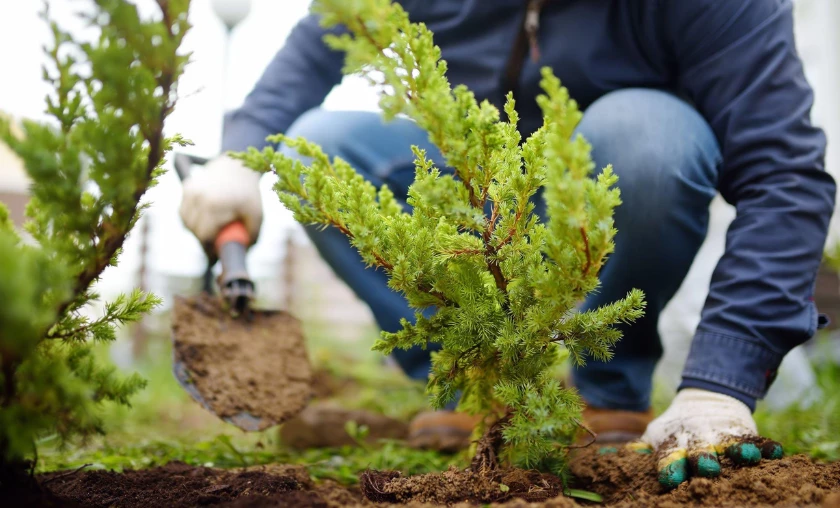
Mastering Seed Planting: Tips for Even Distribution
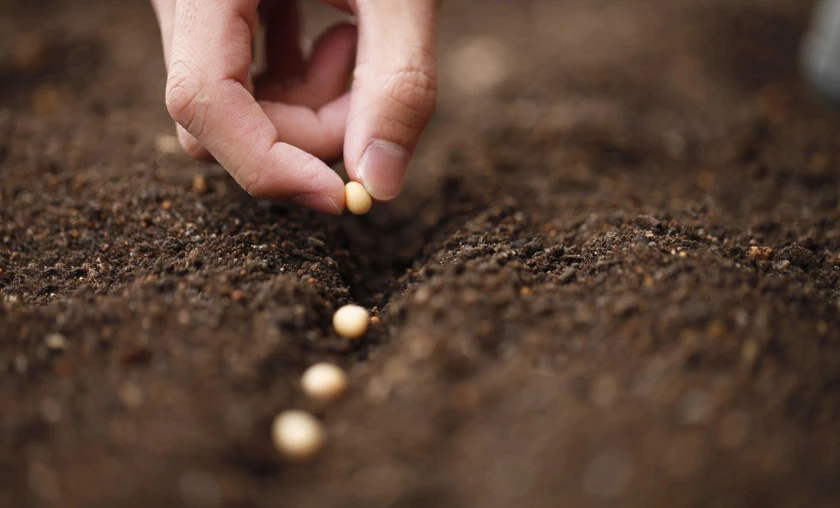
Planting from seeds is like setting the stage for a grand performance. The way you sow those tiny seeds will influence the harmony of your garden as it comes to life. Achieving an even distribution ensures that your garden’s future inhabitants have ample space to grow, breathe, and flourish.
Begin by preparing the soil with a fine, crumbly texture. Follow the recommended planting depth & spacing for each type of seed. A useful trick is to mix small seeds with fine sand to create a more even distribution. Gently tap the sand-seed mixture onto the soil’s surface, creating a uniform spread.
Cover the seeds with a thin layer of soil & water them gently. Patience is your ally here, as germination times vary. Keep the soil consistently moist, and watch as the first tender shoots emerge from the ground. By mastering the art of seed planting, you’re setting the stage for the verdant spectacle that will unfold in the coming weeks.
Transplanting Young Seedlings: Handling with Care
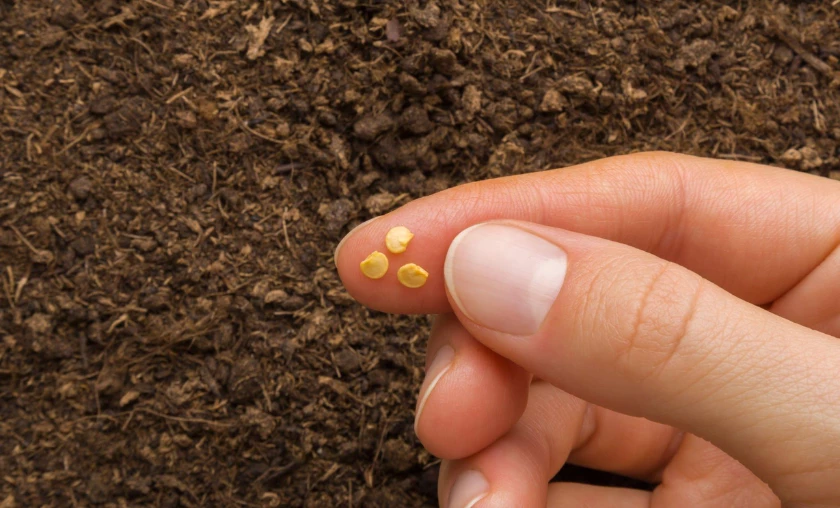
As your tiny seeds sprout and grow, the time will come to transplant them into their permanent homes. This step is like ushering young performers onto a grand stage; careful handling ensures they shine brightly. The transition can be stressful for young seedlings, so your nurturing touch is crucial.
Before Transplanting:
Place the seedlings in their new locations at the same depth they were growing, and gently backfill the soil around them. Water the transplants gently to help settle the soil and provide essential hydration.
Remember, the success of transplanting lies in minimizing stress and shock. By handling your young seedlings with care and ensuring a smooth transition, you’re setting the stage for their growth and ensuring your garden flourishes with healthy, thriving plants.
Nurturing Garden
Nurturing Your Garden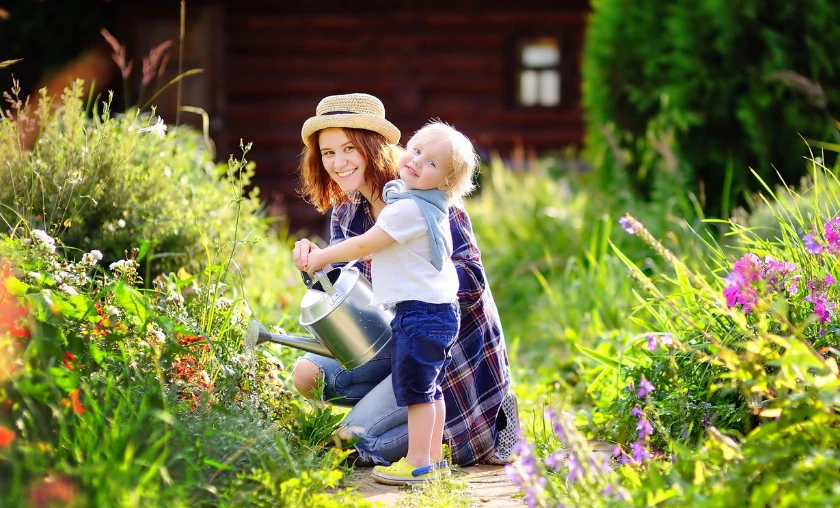
Watering Wisely: The Art of Consistency

Water, the elixir of life, is essential for your garden’s health. But knowing when and how to water is a delicate dance that ensures your plants receive the perfect amount of hydration. The key lies in striking a balance between overwatering and underwatering, promoting healthy growth while preventing stress and disease. Consistency is the backbone of successful watering. Water your garden at the same time each day, preferably in the early morning. This timing allows the foliage to dry before nighttime, minimizing the risk of fungal diseases.
When watering, aim for the roots – the plant’s true source of nourishment. Water deeply and thoroughly, ensuring the moisture reaches the root zone. Shallow, frequent watering can lead to shallow root growth, making plants more susceptible to stress during dry spells.
Utilize mulch to retain soil moisture and reduce the need for frequent watering. And remember, observing your plants is key to understanding their water needs. If leaves are wilting or the soil is dry to the touch, it’s a sign that it’s time to water. With each calculated drop, you’re nurturing your garden’s thirst for life.
Fertilization Fundamentals: Feeding for Growth

In the garden’s journey toward perfection, nutrients play a starring role. Fertilization is like offering a sumptuous feast to your plants, providing the building blocks they need for growth, flowering, and fruiting. But just like a gourmet meal, moderation and balance are key. Understanding the needs of your plants is crucial. Different plants have varying nutrient requirements. Fertilizers are categorized by their N-P-K ratio, representing nitrogen, phosphorus, and potassium levels. Nitrogen promotes foliage growth; phosphorus supports root development, and potassium aids in overall plant health.
Strive for a balanced approach to fertilization. Overfeeding can lead to nutrient imbalances and environmental harm. Combining both organic and slow-release synthetic fertilizers ensures a gradual nutrient release, supporting long-term plant health.
Don’t forget the power of compost – a natural source of nutrients and organic matter. Incorporating compost into your soil enriches it with the full spectrum of nutrients and improves its water-holding capacity.
Pest & Disease
Pest & Disease Management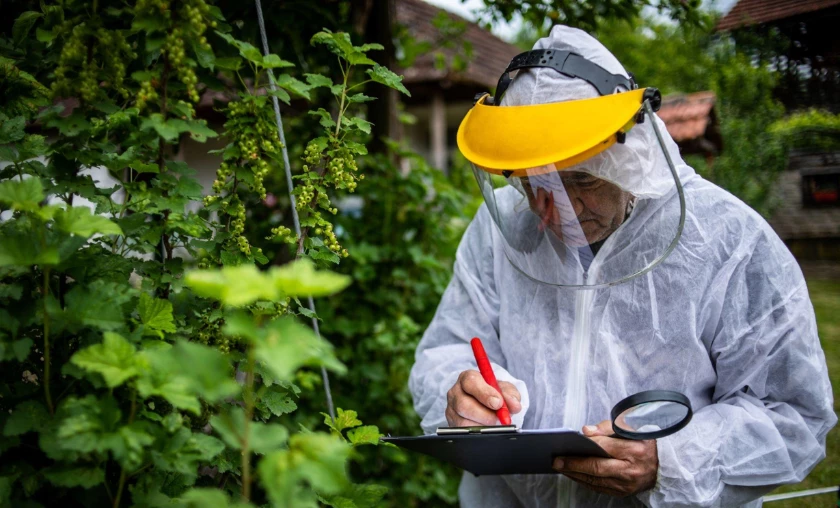
Identifying Garden Pests: Early Detection for Prevention
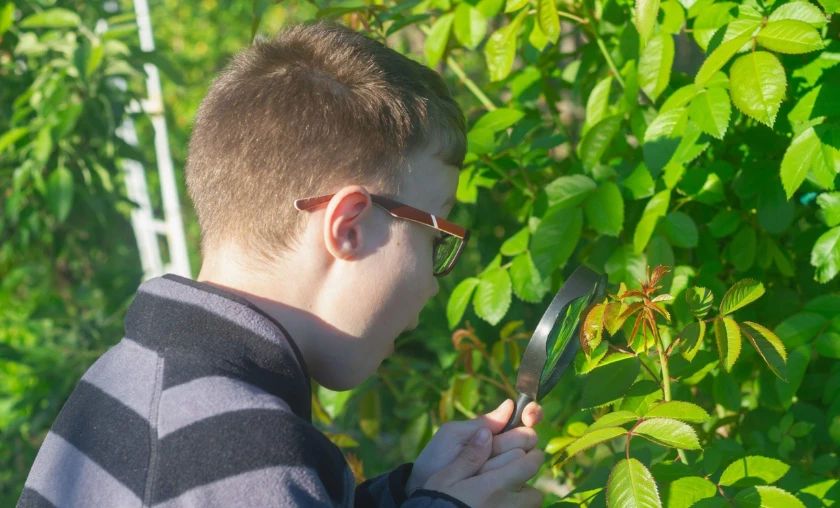
Like detectives in your garden, your keen eyes play a crucial role in detecting potential threats. Pests are crafty infiltrators, and early identification is your first line of defense. Vigilance is key – regular observation allows you to catch signs of infestations before they escalate. Familiarize yourself with common pests that might target your plants. Chewed leaves, distorted growth, or webs are telltale signs of a pest presence. Regularly inspect the undersides of leaves, as many pests hide there.
Integrated pest management (IPM) is a holistic approach that emphasizes prevention and environmentally friendly practices. Encourage beneficial insects like ladybugs and lacewings, which prey on garden pests. Employ physical barriers like row covers or use companion planting to deter unwanted visitors.
The power of early detection cannot be overstated. By watching your garden’s inhabitants, you’re ensuring a thriving and vibrant landscape free from the havoc pests can wreak.
Organic Solutions: Natural Remedies for Common Garden Ailments
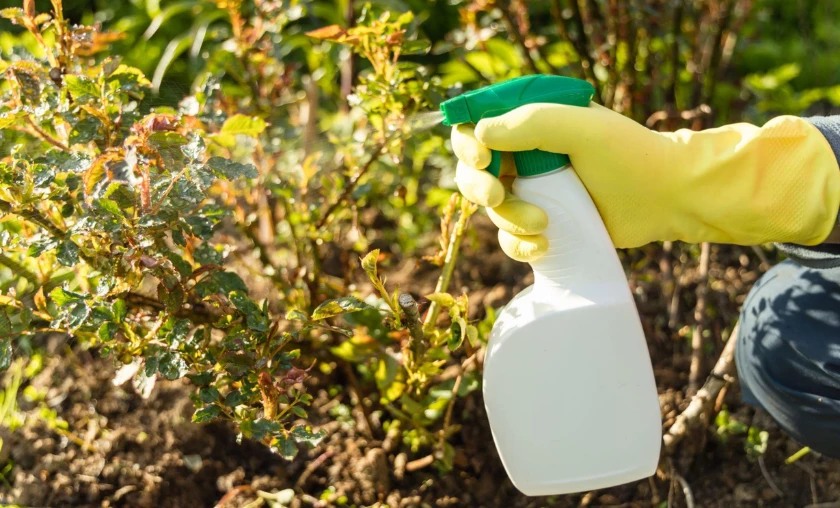
In your garden’s delicate ecosystem, balance is key. When pests and diseases strike, organic solutions ensure harmony remains intact. Embracing natural remedies addresses issues effectively and keeps your garden’s long-term health in mind. Start with preventative measures that maintain a robust garden. Healthy plants are less susceptible to infestations. Promote biodiversity by planting a variety of species that attract beneficial insects, creating a natural defense mechanism.
For existing problems, consider natural remedies that won’t harm beneficial insects or the environment. Neem oil, for instance, is effective against a range of pests while being safe for beneficial insects and pollinators. Introduce companion plants that repel pests or use homemade solutions like garlic spray to deter unwanted visitors.
Remember, the aim is not to eradicate all pests but to achieve a balance that allows your garden to thrive. By embracing organic solutions, you’re fostering a healthy ecosystem that supports your plants’ growth while respecting the intricate relationships that make up your garden’s web of life.
Maintenance & Care
The Maintenance & Care
Pruning & Trimming: Shaping for Health & Beauty

Pruning and trimming are the tools that allow you to orchestrate the growth of your plants, ensuring their health, structure, and aesthetic appeal. Pruning is a strategic act. Removing dead, diseased, or overcrowded branches improves air circulation and reduces the risk of pests and diseases. Prune with precision, using sharp and clean tools to create clean cuts that promote rapid healing.
Trimming serves a dual purpose of shaping and encouraging growth. Regularly removing spent flowers through a practice known as deadheading redirects the plant’s energy towards new blooms rather than seed production. This results in a more extended and prolific flowering period, enhancing your garden’s visual allure.
When shaping plants, be mindful of their natural growth habits. Consult gardening resources or experts to understand the best times for pruning specific plants, as it varies by species. A well-pruned garden is visually appealing, healthier, and more robust, a testament to your care and expertise.
Mulching Magic: Benefits & Application Techniques
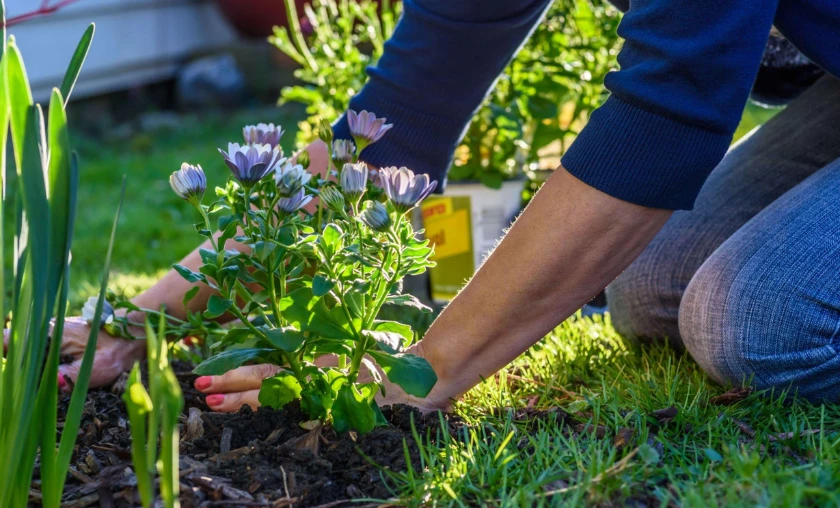
Mulch, a layer of organic or inorganic material, offers a range of benefits that contribute to your garden’s health, beauty, and longevity. Mulch acts as a protective blanket, shielding the soil from extreme temperatures and moisture fluctuations. It prevents weed growth by blocking out sunlight and reducing the competition for nutrients and water. As it decomposes, mulch adds organic matter to the soil, enhancing its structure and fertility.
When applying mulch, follow a few essential guidelines. Start with a clean, weed-free surface. Spread mulch around plants, leaving a few inches of space around the base to prevent moisture buildup. A 2-4-inch layer is generally recommended, but this can vary based on the material used and the climate.
Choose a mulch that aligns with your garden’s needs and aesthetics. Organic options like bark, wood chips, or straw enrich the soil as they break down. Inorganic options like gravel or rubber chips offer a long-lasting solution for areas without desired decomposition.
Seasonal Considerations
The Seasonal Considerations
Spring Awakening: Essential Tasks for a Strong Start
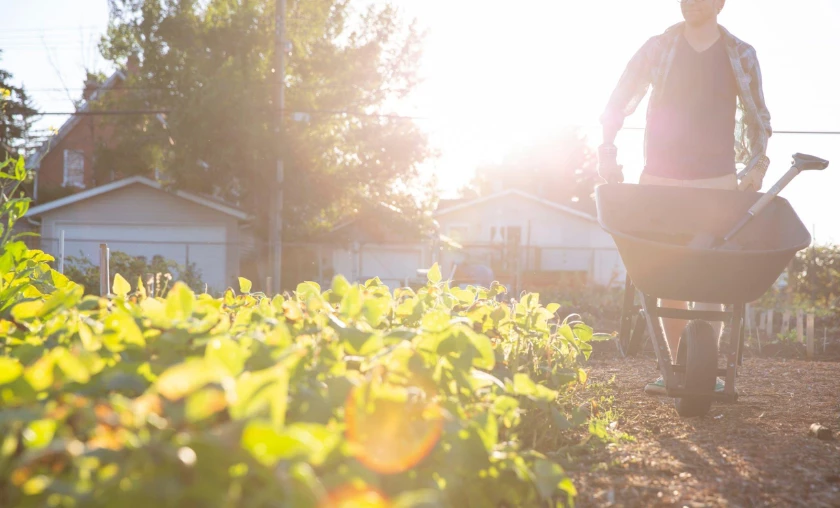
As the earth warms and life stirs, essential tasks set the stage for a vibrant, growing season. Start by assessing your garden’s condition after winter. Clear away fallen leaves, debris, and any signs of damage. This step not only tidies up your space but also uncovers any early signs of pest or disease issues.
Prep your soil for planting by cultivating the surface and incorporating compost or organic matter. Consider conducting a soil test to determine nutrient levels and adjust accordingly. This ensures that your plants have the optimal foundation for healthy growth. Spring is the time for planting – a dance with possibilities. Direct sow seeds or transplant young seedlings, following the guidelines we’ve covered earlier. Keep a watchful eye on the weather, protecting tender plants from late frosts.
Embrace the magic of spring by observing your garden as it awakens. Celebrate each sprout and bud as a promise of the beauty to come. As you tend to your garden in this season of renewal, you’re nurturing a symphony of growth that will flourish in the months ahead.
Summer Sustenance: Keeping Your Garden Flourishing

With the arrival of summer, your garden is in full swing, bursting with life and color. As the sun shines brighter and the days grow longer, your role as a gardener shifts to providing the sustenance your plants need to thrive. The art of watering takes center stage. Understand your plant’s water needs and provide consistent moisture. Water deeply and at the right time of day to prevent water stress and disease. Consider using soaker hoses or drip systems for efficient irrigation.
Deadheading, a practice we’ve explored earlier, becomes essential in summer. As spent flowers fade, remove them to encourage continuous blooming. Prune plants that have finished flowering to stimulate new growth and maintain their shape. Keep a watchful eye on pests & diseases. Regularly inspect your plants for signs of trouble, & intervene promptly if issues arise. Insects like aphids and diseases like powdery mildew can spread quickly in warm weather, so early detection is crucial.
As you work in your garden during summer, remember that you’re maintaining plants and nurturing life. The flowers that bloom and the vegetables that ripen are a testament to your care and dedication. Your garden becomes a living, breathing masterpiece, a vibrant reflection of your green-thumb journey.
Fall Prep: Getting Your Garden Ready for Winter

Fall whispers gently, urging you to prepare your garden for the impending winter and ensure its resilience through the colder months. Harvest time is a season’s reward, the culmination of your efforts. Gather the fruits of your labor – ripe vegetables, bountiful flowers, and perhaps a final bouquet. Preserve the harvest through canning, freezing, or drying, extending the joys of your garden into the winter.
Fall is also the time for planting bulbs that will emerge as vibrant blooms in spring. Prepare your garden beds by clearing away spent plants, weeds, and debris. Amend the soil with compost to fortify it for the coming months. When the first frost approaches, protect tender plants by covering them with frost cloth or burlap. This simple step can extend their life and ensure they emerge strong when spring returns.
As you prepare your garden for winter, remember that your care extends beyond the growing season. Each task you undertake nurtures the resilience of your garden, setting the stage for its rebirth in the following spring. In the tapestry of seasonal changes, your role as a gardener remains constant – a steward of life and growth, no matter the time of year.
Creative Touches
The Creative Touches![Gardening Tips & Tricks: A Step-by-Step Guide to Perfecting Your Garden! ([wpsm_custom_meta type=date field=month] [wpsm_custom_meta type=date field=year]) - The Complete Portal](https://thecompleteportal.com/wp-content/uploads/2023/09/Creative-Touches.webp)
Incorporating Garden Decor: Adding Charm & Personality

Your garden is an extension of your home, a place where your personality can shine through. Garden decor offers an opportunity to infuse charm, beauty, and even a touch of whimsy into your outdoor space. Consider adding elements like garden sculptures, ornamental birdbaths, and decorative benches. These pieces elevate your garden’s aesthetic and provide focal points that draw the eye and create a sense of wonder.
Wind chimes, hanging lanterns, and colorful banners can add movement and visual interest. Decorative containers and planters come in a range of styles, from rustic to contemporary, allowing you to create a cohesive design that complements your home’s architecture.
Remember, the key to successful garden decor is moderation. Choose pieces that enhance your garden’s beauty without overwhelming the natural elements. Every piece you incorporate becomes a thread in the tapestry of your garden’s story, telling a tale of your creativity and love for nature.
Companion Planting: Enhancing Growth & Biodiversity

Nature is a master of collaboration, and companion planting is a technique that mimics this harmony in your garden. Strategically placing plants that benefit each other creates a thriving ecosystem that encourages growth, minimizes pests, and enhances biodiversity. Certain plants have natural pest-repelling properties that can protect their neighbors. For example, marigolds deter aphids, while nasturtiums repel whiteflies. Onions and garlic can discourage pests from attacking nearby plants.
Additionally, some plants act as natural fertilizers, enriching the soil with nutrients from which their companions can benefit. Legumes, like peas & beans, fix nitrogen in the soil, benefiting neighboring plants with their natural fertilizer.
The art of companion planting goes beyond pest control and nutrient sharing. Certain combinations can provide shade or support for climbing plants. For instance, tall sunflowers can shade delicate lettuce, while cornstalks can act as valleys for vining plants.
Enjoying Fruits of Labor
Enjoying the Fruits of Your Labor
Harvesting & Enjoying Your Garden’s Bounty

Harvest time is a celebration of nature’s abundance and your hard work. The process of nurturing a seed to maturity and then gathering the ripe produce is a rewarding experience that connects you to the cycles of life. As you carefully pluck ripe tomatoes, vibrant peppers, or tender greens, you savor the fruits of your labor and the satisfaction of nourishing yourself and your loved ones.
Harvesting extends beyond the realm of vegetables and fruits. Flowers, too, offer their beauty as a reward for your care. Gathering fresh-cut blooms to adorn your home or share with others infuses your surroundings with the splendor of nature’s creations.
Beyond the immediate enjoyment, harvesting also serves as a lesson in gratitude and patience. It reminds us of the value of waiting, nurturing, and respecting the earth’s rhythms. The experience of harvesting from your garden not only nourishes your body but also feeds your soul with a deep connection to the earth’s cycles.
Inviting Nature: Creating a Garden Oasis for Wildlife
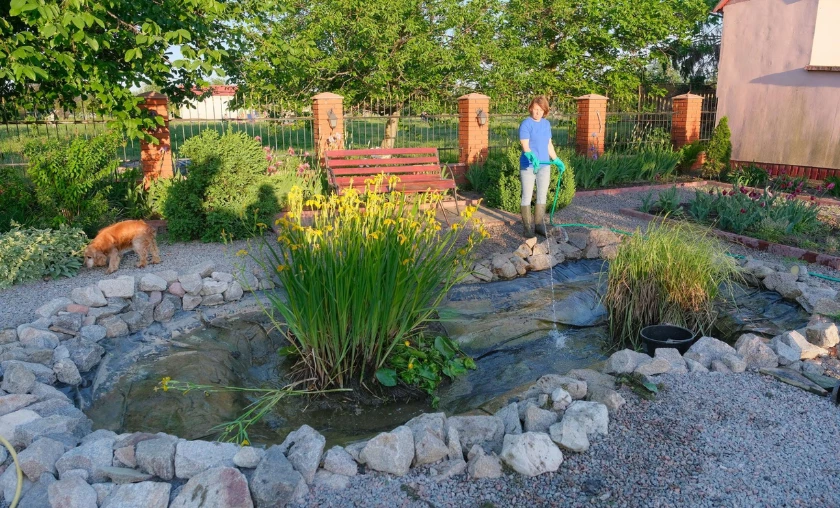
Gardens are not just for humans; they’re also sanctuaries for the vibrant web of wildlife that graces our surroundings. By creating a space that welcomes and supports various creatures, you contribute to local biodiversity and enrich your own experience of nature.
Inviting wildlife into your garden requires thoughtful planning. Planting a variety of native plants that provide food & shelter is a great way to attract birds, butterflies, bees, and other pollinators. Incorporating a water feature, such as a bird bath or small pond, provides a vital resource for animals to drink and bathe.
Consider leaving a small wild area or a pile of leaves and sticks as a nesting site for small animals and insects. This adds a natural touch to your garden while offering homes for creatures that play essential roles in your garden’s ecosystem.
Conclusion
Gardening Tips & Tricks: A Step-by-Step Guide to Perfecting Your Garden” provides a comprehensive roadmap for novice and seasoned gardeners to embark on a transformation journey.
Through careful planning, skillful techniques, and a deep connection with the natural world, this guide equips you to create a thriving haven of beauty and sustenance. From selecting the perfect plants to fostering growth through nurturing care, managing pests, and embracing the seasons, this guide encapsulates the essence of gardening as a harmonious dance with nature.
As you embrace each step outlined in this guide, you cultivate vibrant landscapes and nurture a profound connection to the earth’s rhythms, ultimately reaping the rewards of your labor in both tangible and soul-enriching ways. So, with your newfound knowledge and passion, let your garden become a canvas where beauty and growth intertwine, reflecting the natural world’s masterpiece.
FAQs
What are the key elements to consider when planning a garden?
When planning your garden, start by defining its purpose and goals. Decide whether you want to focus on ornamental plants, grow food, or create a serene retreat. Choose plants that align with your garden’s personality and design a layout that optimizes growth and aesthetics. Each step sets the foundation for a flourishing garden.
How can I enhance my garden’s soil quality?
Improving soil quality is crucial for plant health. Begin with a soil test to understand its composition. Depending on the soil type, enhance it with organic matter such as compost or well-rotted manure. These additions enrich nutrients and improve water retention. A balanced approach to fertilization using natural and slow-release options will further contribute to soil health.
How do I ensure my garden receives adequate water?
Watering wisely involves consistent care. Observe your plants for signs of thirst, like wilting leaves or dry soil. Water in the morning to allow foliage to dry before nightfall. Focus on deep watering to encourage deep root growth. Consider using efficient irrigation methods such as soaker hoses or drip systems to minimize water wastage.
What’s the best way to manage garden pests organically?
Integrated pest management (IPM) is effective. Prevent infestations by keeping your garden clean and choosing pest-resistant plant varieties. Regularly inspect your plants for signs of pests. Use natural remedies like neem oil and garlic spray, or introduce beneficial insects to control pests without harming the ecosystem.
What role does garden decor play in enhancing my space?
Incorporating garden decor adds charm and personality to your garden. Statues, birdbaths, and other ornamental elements create visual interest. Companion planting, where certain plants thrive together, enhances growth and biodiversity. You thoughtfully integrate these creative touches to elevate your garden into a captivating and harmonious sanctuary.
To read more similar articles, click here.
Thanks for visiting our Website. If you appreciate our work, kindly show us some support in our comments section. 🙂


